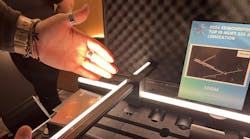The second annual Sylvania Socket Survey reveals a paradox in Americans’ attitudes toward lighting — although 74% have switched to an energy-saving light bulb in the past year, the majority is not aware of the impending federal phase-out of incandescent lamps, starting in 2012 with the 100W bulb. While increasingly price sensitive, the majority of respondents have warmed up to the idea of eco-lighting and say they are likely to purchase a CFL, halogen, or LED bulb in the future.
Additional findings of the 2009 Sylvania Socket Survey include:
- Consumers are concerned about energy efficiency.
- Approximately three-quarters (74%) say they have switched a light bulb for more energy efficiency in 2009, compared to 62% in 2008.
- The amount of energy a bulb uses is an important factor for almost all (91%).
- CFLs continue to be second only to traditional bulbs. Most (71%) say they have CFLs in their home.
- Most (79%) say they are likely to purchase CFLs in the future — citing energy efficiency as their primary benefit (32%).
- Halogen (40%) and LEDs (12%) are less popular.
- Price (31%) and mercury (27%) continue to be the primary concerns about CFLs.
- Awareness of the ban is still low. Almost three-quarters of consumers (74%) still do not know that Congress banned traditional incandescent light bulbs by 2014 — not statistically different from last year (78% unaware)
- Even fewer (82%) know that 100W bulbs will not be available after Jan. 1, 2012.
- The majority (66%) of consumers say they will switch to a new technology light bulb.
- Only 13% say they will buy up extra 100W bulbs, and 16% say they will switch to lower wattage incandescent light bulbs.
- Those who say they will switch are most likely to switch to CFLs (57%), although many are unsure (25%).
This survey was conducted over a 3-day period in November 2009. According to Osram Sylvania, more than 300 interviews were conducted with homeowners and renters nationwide. Adult respondents were surveyed via phone, using random digit dial techniques.
Source: Osram Sylvania


